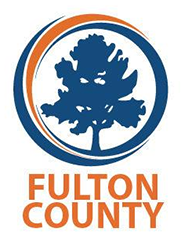Is Justice Timely Predicting the Duration of a Felony Case

Is Justice Timely Predicting the Duration of a Felony Case
May 27, 2020
Under Fulton County IT Center of Excellence run by Justyna Grinholc, we delivered a project with at Georgia State to predict case duration.
During the spring semester 2020, “Court Automation” students Victor Avila, Tiffany Din, Bryan Rivas, and Drashty Suhagia in collaboration with Thelma Nora, Farhan Azad, Nathan Harris, conduct detailed examination of the internal and external factors that affect felony "case duration" here at Fulton County/GA. "Case duration" is the elapsed time from indictment to disposition according to National Center for State Courts. It is an important metric to track for most court jurisdiction—not only for the overall health and efficiency of the court process, but also for its personal impact on the lives of the litigants involved. In fact, we are reminded of the language in the 6th Amendment of the Constitution that requires that all criminal cases receive a ruling within a reasonable timeframe or “speedy trial”.
To conduct this data science study, the students under the supervision of Michael Lane and Terrence Harris leveraged each phase of the CRISP/DM methodology throughout the project. Initially for “business understanding” they spent time on QA and validation of the data. They also spent time researching and reading various articles from previous court studies worldwide. For “data understanding” they conducted a close study of various court data attributes which included a deep examination using Business Processing Mining (BPM)—the family of techniques in Process Management that allows us to analyze business processes based on event logs. Understanding these results helped the students better interpret and navigate the use of the CRISP/DM methodology and also provided the courts with much-needed insights on how we can improve efficiency. Using the heuristic mining algorithm, process discovery, trace analysis, and bottleneck analysis, the students also found that not only do all judges use their hearings differently, but also how the dataset representing the general population of cases could be more optimally be segmented. By using ARIMA and autocorrelation analysis, they also discovered the hidden effects of judicial holds and DA caseloads. From these accomplished insights, they then cleaned and “prepared the data” for modeling. Notably, the students serendipitously engineered more realistic and granular time standards from the heuristic miner than are required by the original NSCS guidelines for Georgia. This allowed for a more balanced approach for predictions around "case duration" using categorical clustering. The students also used R and several advanced modeling approaches like Radial Kernel SVM and Random Forests to help derive predictions. Just as impressive were their efforts to build an initial dashboard prototype using Tableau to display these predictions.
Lastly, soft skills were also a big part of this project which included a focus on time management skills, managing project plans, status updates, and most of all giving weekly presentations to our various business and technology stakeholders. With full weekday schedules already, the students embraced the challenge, frequently working late hours and weekends to meet project deadlines. They finished the project by making several valuable recommendations for the possible next phase of the project using case flow management principles and optimization. What these students were able to accomplish in 12 short weeks, especially considering the untimely emergence of the COVID-19 pandemic (requiring the last few weeks of the project to be completed online) was indeed quite remarkable. We are tremendously impressed and appreciative of their dedication and passion for this project.
During the spring semester 2020, “Court Automation” students Victor Avila, Tiffany Din, Bryan Rivas, and Drashty Suhagia in collaboration with Thelma Nora, Farhan Azad, Nathan Harris, conduct detailed examination of the internal and external factors that affect felony "case duration" here at Fulton County/GA. "Case duration" is the elapsed time from indictment to disposition according to National Center for State Courts. It is an important metric to track for most court jurisdiction—not only for the overall health and efficiency of the court process, but also for its personal impact on the lives of the litigants involved. In fact, we are reminded of the language in the 6th Amendment of the Constitution that requires that all criminal cases receive a ruling within a reasonable timeframe or “speedy trial”.
To conduct this data science study, the students under the supervision of Michael Lane and Terrence Harris leveraged each phase of the CRISP/DM methodology throughout the project. Initially for “business understanding” they spent time on QA and validation of the data. They also spent time researching and reading various articles from previous court studies worldwide. For “data understanding” they conducted a close study of various court data attributes which included a deep examination using Business Processing Mining (BPM)—the family of techniques in Process Management that allows us to analyze business processes based on event logs. Understanding these results helped the students better interpret and navigate the use of the CRISP/DM methodology and also provided the courts with much-needed insights on how we can improve efficiency. Using the heuristic mining algorithm, process discovery, trace analysis, and bottleneck analysis, the students also found that not only do all judges use their hearings differently, but also how the dataset representing the general population of cases could be more optimally be segmented. By using ARIMA and autocorrelation analysis, they also discovered the hidden effects of judicial holds and DA caseloads. From these accomplished insights, they then cleaned and “prepared the data” for modeling. Notably, the students serendipitously engineered more realistic and granular time standards from the heuristic miner than are required by the original NSCS guidelines for Georgia. This allowed for a more balanced approach for predictions around "case duration" using categorical clustering. The students also used R and several advanced modeling approaches like Radial Kernel SVM and Random Forests to help derive predictions. Just as impressive were their efforts to build an initial dashboard prototype using Tableau to display these predictions.
Lastly, soft skills were also a big part of this project which included a focus on time management skills, managing project plans, status updates, and most of all giving weekly presentations to our various business and technology stakeholders. With full weekday schedules already, the students embraced the challenge, frequently working late hours and weekends to meet project deadlines. They finished the project by making several valuable recommendations for the possible next phase of the project using case flow management principles and optimization. What these students were able to accomplish in 12 short weeks, especially considering the untimely emergence of the COVID-19 pandemic (requiring the last few weeks of the project to be completed online) was indeed quite remarkable. We are tremendously impressed and appreciative of their dedication and passion for this project.

